Home / Resources
Resources
Discover a Wealth of BPM Knowledge and Expertise at BPMInstitute.org!
Combining Cloud, SOA, BPM and Rules to Create Break-Through Solutions
Cloud computing is a style of computing in which dynamically scalable and often virtualized resources are provided as a hosted service over the Internet i.e. ‘the cloud’. The goal of cloud computing is to provide easy, scalable access to computing resources and IT services.
Enterprises large and small are drawn by the advantages of cloud, resulting in very low barriers to entry and exit and high agility.
Cloud computing is a style of computing in which dynamically scalable and often virtualized resources are provided as a hosted service over the Internet i.e. ‘the cloud’. The goal of cloud computing is to provide easy, scalable access to computing resources and IT services.
Management Strategies for SOA
Management Strategies for SOA
The SOA consortium has been running an annual contest for the best SOA Case Studies. Last year I attended the event and summarized the common characteristics of successful SOA implementations. This year’s winners shared the same characteristics:
1. Strong executive level commitment2. Educate the business of the value of SOA3. Establish a Center of Excellence4. Well defined business services5. Completeness of services6. Sound quality assurance7. ROI realized over time
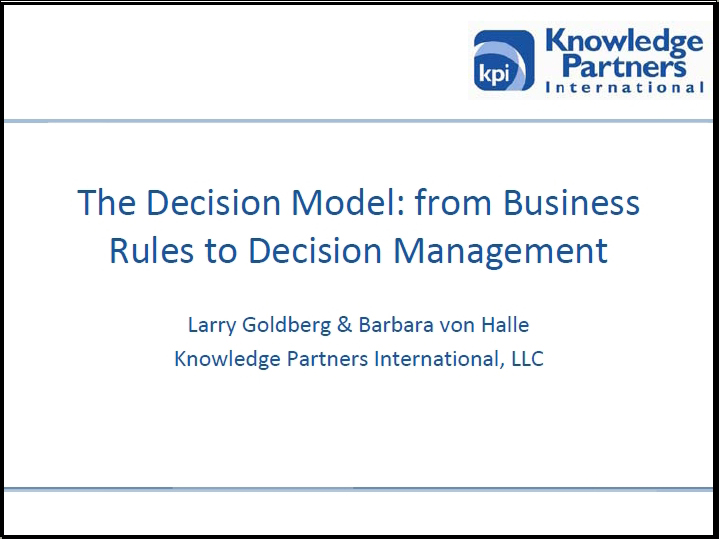
The Decision Model: Empowering Decision Management
“The Decision Model gives form, function and a tangible visual representation to business logic” – The Decision Model (von Halle & Goldberg)
In order to implement Decision Management effectively, we need to be able to identify and manage the business logic (i.e. the business rules) underlying business decisions. It soon becomes apparent that classical methods of gathering and managing business rules (i.e.
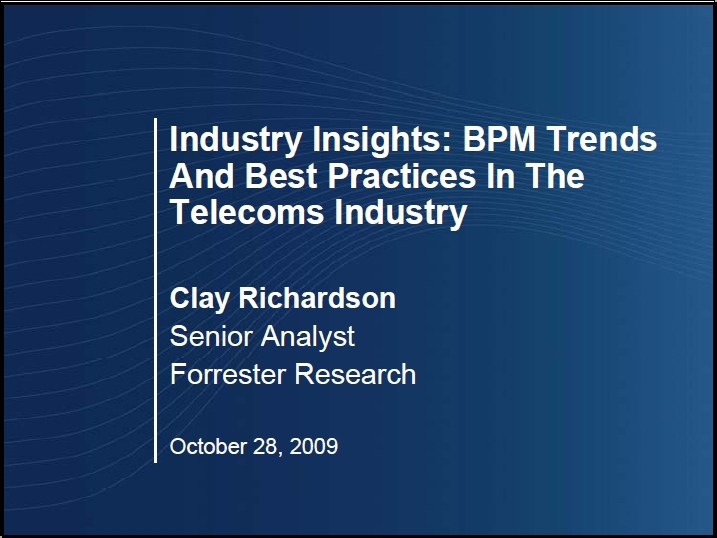
Addressing Challenges in Communication & Media using BPM
Controlling costs and resources is just the tip of the iceberg facing communications companies in an ever-tightening financial and regulatory environment. Part of the issue is the underpinnings of their business infrastructure, such as…

Business Semantics – Information Alignment
Technology has produced many wonderful and useful things and has changed the way we work and play. It has also produced a good many solutions for problems that nobody thinks are important. Or, the technology based solution to the problem has a greater cost than the value that would be realized from the solution.

Target State Business Architecture an ideal model for forming an Outsourcing Agreement
Outsourcing
The term outsourcing is developing a whole new concept with the recognition that through scale opportunity service providers can not only provide more efficient processing but can also deliver high value adding based services directly to the customer.
However, the outsourcing of high value business processes can be quite complex and requires serious preparation before a decision can takes place to release responsibility to a third party.
The key questions facing the organisation are:

Building Strong Management Support for Your Change Management Program
Your kickoff meeting is scheduled and you have carefully put together your change management communication strategy and plan. You have spoken to the CEO and he is happy to speak at the kickoff and has given you his commitment to provide ongoing support. You have been diligent, meeting with him several times to go over the key points that you would like included in his messages. You have even begun to have informal discussions on the CM strategy and plan with key impacted stakeholders, and are gaining their support. This all sounds great doesn’t it? So why are you, getting resistance from your mid-level managers every time you speak with them?

BPM Center of Excellence
In my last article, I talked about selecting a BPM tool while keeping in mind both the short and long term needs of an organization’s process needs. But as we are all aware, whether we acknowledge it or not, tactical views and immediate implementation needs take priority over strategic needs. People tend to overlook long term process needs while focusing on only the immediate process automation needs. Moreover, while focusing on tactical needs, organizations tend to overlook areas such as process ownership and governance, roles and responsibilities, Service levels, and standards that should be associated with any process initiatives. More importantly these need to be thought through prior to embarking on the BPM journey. A BPM Center of Excellence (COE) can help with all of these areas.
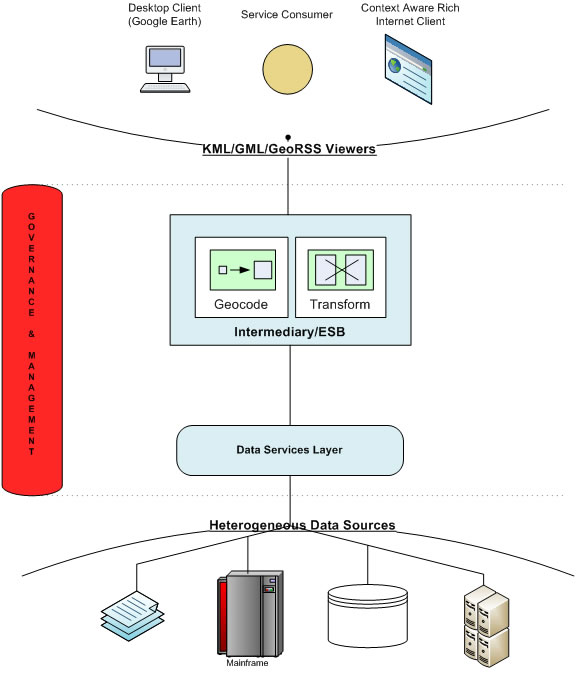
Geo Transform: Geo Visualize the ROI on your SOA Infrastructure
A SOA implementation roadmap can be long and the SOA infrastructure, like “plumbing”, can be hidden from the end user during construction. During our SOA implementation, we used an “Early SOA” approach, where we connected a “faucet” to the SOA infrastructure and helped users “tap into” the value of the SOA infrastructure being built. Most Enterprises have Data and Processes with location attributes. We leveraged the SOA Infrastructure to transform Enterprise Data and Processes into an Open Geo Visualization Standard like KML[1] or GML[2].
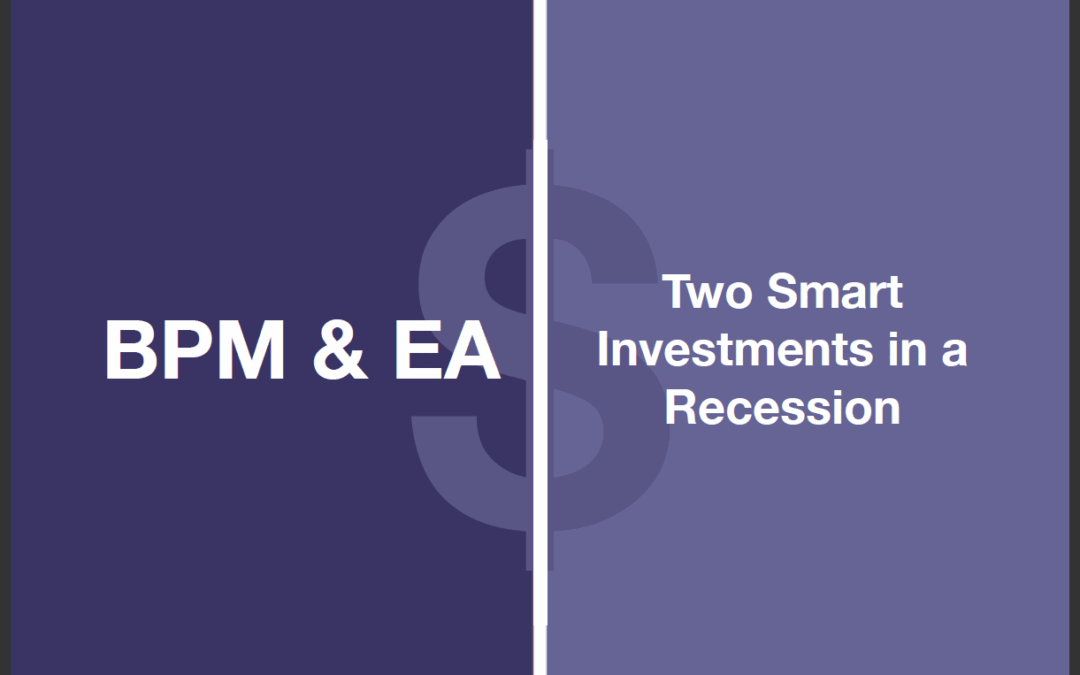
BPM & EA – Two Smart Investments in a Recession
The glory days seem far behind as stock prices fall, retail sales plummet, budgets are cut and global markets struggle. Both businesses and government organizations are looking for ways to dramatically reduce costs, do more with less and basically just survive the economic storm.
Most companies are using what seems to be a logical approach – cut, cut, cut. Cut people, cut budgets, cut travel, switch to lower cost suppliers – anything that results in an immediate reduction to expenses.
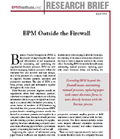
Research Brief: BPM Outside the Firewall
This Research Brief highlights a selection of the findings from the BPMInstitute.org’s State of BPMSM Research. It reviews the process and data complexity challenges associated with automating mission-critical processes and extending them to a company’s remote employees, customers, partners and suppliers. It explores the support requirements for those people who are disconnected from the home office.
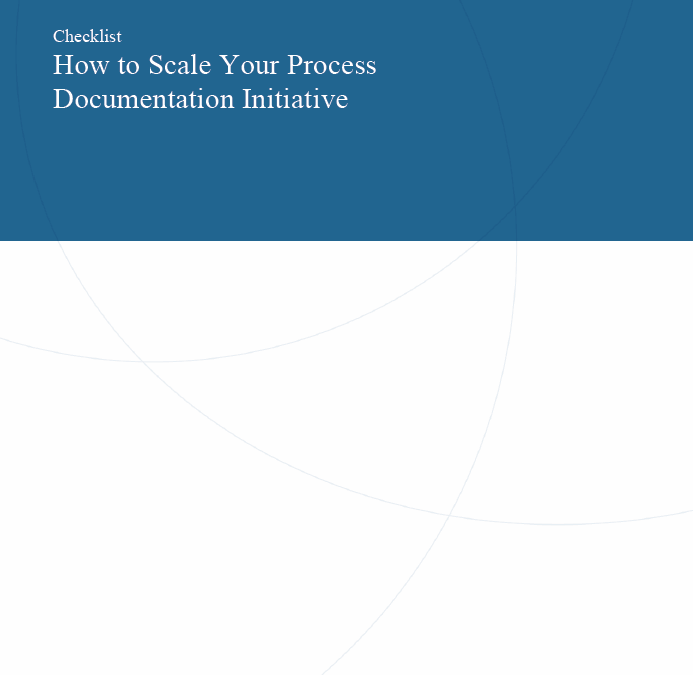
How To Scale Your Process Documentation Initiative
Strong, visible sponsorship is essential for an initiative of this nature to succeed – you will require time and effort from a large number of people across the business. This weekly meeting creates a definite time commitment on the executive’s schedule, keeps them engaged, and is essential to the initiative’s success. Each week, you will get push back from groups who are busy “fighting fires” and may not want to prioritize your process documentation initiative. Utilize this meeting to place executive pressure on those groups to ensure commitment is kept.
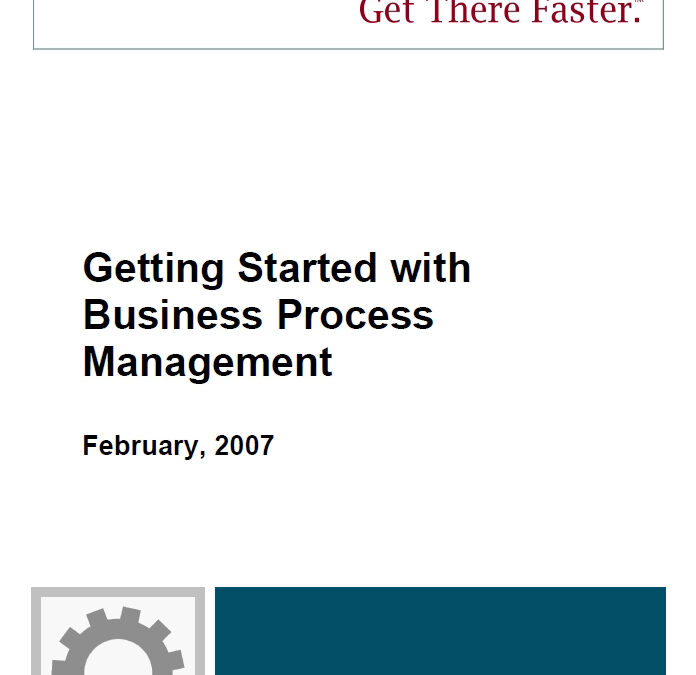
Cloud Community Eases The Path To BPM For Business Users
IBM BPM BlueWorks is cloud-based community with resources to help business leaders link strategy and execution. Users can tap into content and tools that support any stage of process analysis — from learning about BPM to collaborating with the community, experiencing BPM and optimizing processes. At each stage, users have access to pre-built BPM content, processes and contributions from BPM experts and users worldwide. BPM BlueWorks is available at no-cost, making it easy for any business to get started with BPM.

Are You Set Up To Manage Process Change?
When the idea of BPM as we understand it today first began to gain currency (when Smith and Fingar published their book “Business Process Management: The Third Wave” in 2003), the distinction that was clearly made between BPM and its predecessor, Business Process Reengineering, was that BPM explicitly recognises that business processes change over time, and seeks to help organisations enable and drive continuous change through the lifecycles of processes.

The Process Professional: An Independent Review of Ascentn’s AgilePoint
In a continuing series evaluating the tools used by Business Process practioners, this article looks at Ascentn’s AgilePoint. Criteria for evaluation are ease of use, a short learning curve, and good collaboration features.
AgilePoint is a full-featured BPM suite. Ascentn distinguishes their market as one of “people and culture, not technology.” After looking into their products, I understand this to mean their focus is on the process practitioner.

Business Decisions and Rules
Several years ago I was asked to be part of a panel discussing business process and business rules at one of the BrainStorm conference stops. The panel included James Taylor – noted thought leader and the man who coined the term “Enterprise Decision Management”. I had had the pleasure of talking with James on several occasions prior to this panel but found myself doing a double-take when he said “the dirty secret is that business analysts don’t really care about the rules”. Blasphemy! Isn’t that why we’re all here? Isn’t that what we do?

The Role of Organizational Change Management in Business Architecture
Recently I described the role of the Business Architect in developing a formal Organizational Change Management program. As a result, I had an interesting conversation with a CIO. This CIO had a good understanding of and appreciation for business architecture.

Vetting Business Architecture (BA) Approaches
This is the inaugural year for the BusinessArchitectureInstitute.org with its recent launch this past spring. The growth of interest and the demands for information surrounding Business Architecture (BA) have increased significantly over the past few years. BrainStorm BA conference attendees and BA training class students have benefited from seeing a new approach emerge for the enterprise. Hopefully, the reader has participated in one of this year’s BrainStorm events and learned of the many opportunities associated with the Business Architecture.

SOA and Cloud Computing
Cloud Computing is an emerging style of IT delivery in which applications, data, and IT resources are rapidly provisioned and provided as standardised offerings to users over the web in a flexible pricing model.
At a recent conference where I presented on the current state of Cloud Computing, I was pleasantly surprised at the level of genuine interest given the current low investment situation in which most companies find themselves.

Cloud Computing – or Whatever You Call It
Organizations are moving applications and infrastructure to servers on the Internet at an increasingly rapid rate and Cloud Computing – or whatever you call it – is changing the way people access information as well as they way they work and play. That is making the term ”Cloud Computing” more ubiquitous. Yet, as often happens with emerging technology waves, it is also making the term more confusing and vague.













